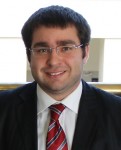The Giornale dell’Architettura is the media partner of the conference, promoted by the Pontifical Council for Culture, on the future of the cultural heritage of the communities of consecrated life
Read the other articles about the international conference
“Charism & Creativity”. Two words, apparently so different, yet capable of synthesizing the indissoluble interweaving between the spirituality of religious communities and their contribution to the cultural and artistic development of the Catholic Church in its two-thousand-year history. A union materialized in a peculiar set of goods, both movable and immovable, recognized of universal (and not only religious) interest.
On the fate of this rich but heavy inheritance more than one question arises today, as a consequence of the decline in the number of vocations to consecrated life. According to some recent studies regarding Italy, in fact, in the absence of a significant turnover, by 2046 there could be the zeroing of religious communities with the consequent problem of the management of their houses, convents and immense cultural heritage.
Hence the reason for a change of perspective and for an international conference the Holy See has launched through a call for papers open to researchers, cleric and representatives of associations and foundations working on cultural heritage of religious communities from all over the world.
This initiative, promoted by the Congregation for Institutes of Consecrated Life and Societies of Apostolic Life and by the Pontifical Council for Culture, intends to shed light on innovative systems of cataloging and management of cultural heritage, considering it not only as a burden, but as a resource of the Church and Religious Communities and as a tool to dialogue with contemporary society.
An authoritative and international scientific committee that brings together teachers and experts in architecture, theology, economy and legal fields, will select the proposal of interventions which will eventually be presented at the Conference to be held in Rome, from 30 September to 1 October 2021.
An interest on the cultural heritage of the so-called “hierarchical church” (dioceses, parishes and brotherhoods) has prevailed so far. Undoubtedly, the data relating to the cultural heritage under the jurisdiction of bishops are more detailed and homogeneous than the ones regarding the belongings of religious communities, as it is shown in Italy by the census of diocesan churches, promoted by the Italian Bishops’ Conference and now available on the BeWeb portal. This is probably the largest and most extensive collection of cultural assets on the Italian territory.
Not as much attention, however, has been given to the cultural heritage of communities of consecrated life. Due to the fragmentation of its owners with supra-regional or international government these assets, as it is amply documented by local news, are more easily the object of looting, dispersion, speculation or transformation of use, not always appropriate with respect to their original function.
This also occurs due to the difficulties involved in cataloging and managing assets, operations which inevitably have to be confronted with the managerial autonomy of each individual institution and with an articulated but not always coordinated polyphony of entities, people and charisms.
And precisely the charism, that is the pastoral specialization that identifies each congregation, constitutes an essential element in order to plan new uses for monasteries and convents that are abandoned or in the process of being dismissed. These assets can still offer a lot to the territories in which they are located and to the physical and cultural landscapes that, over the centuries, they have contributed to shape.
Image: Le Corbusier, Convent de Sainte Marie de La Tourette in Éveux (France, 1956-60)
“Charism & Creativity. Catalogue, management and innovation regarding the cultural heritage of institutes of consecrated life”
September 30 – October 1, Rome
Information and registration: carismaecreativita.net
About Author
Tag
beni culturali , Charism&Creativity , congressi , roma
Last modified: 10 Maggio 2021


























[…] Leggi l’articolo in inglese […]